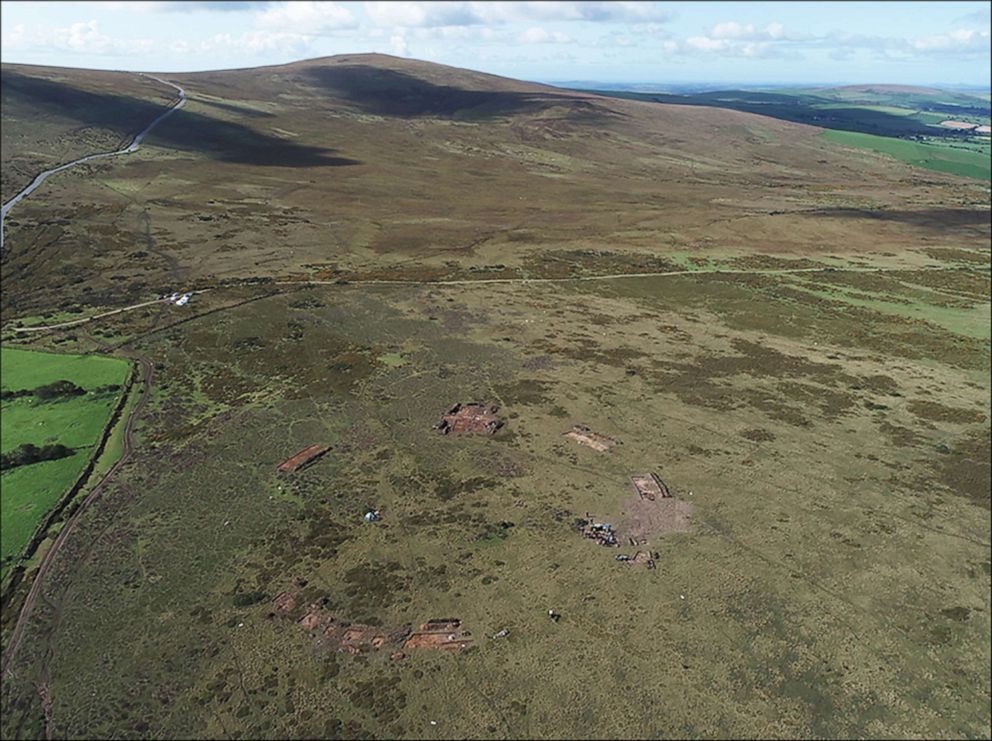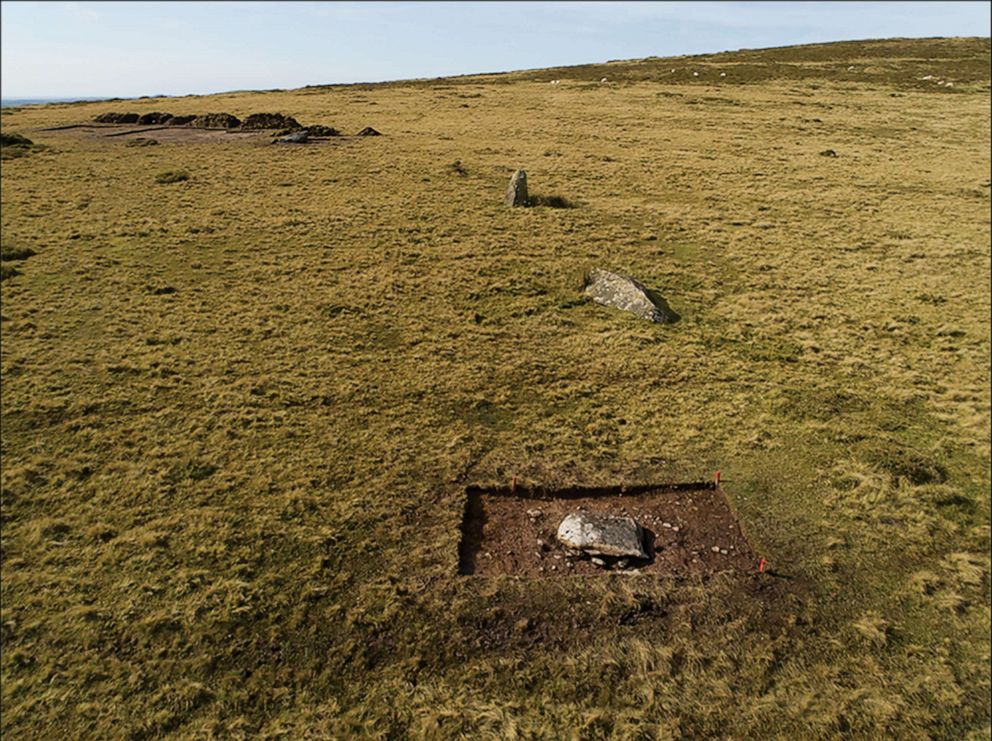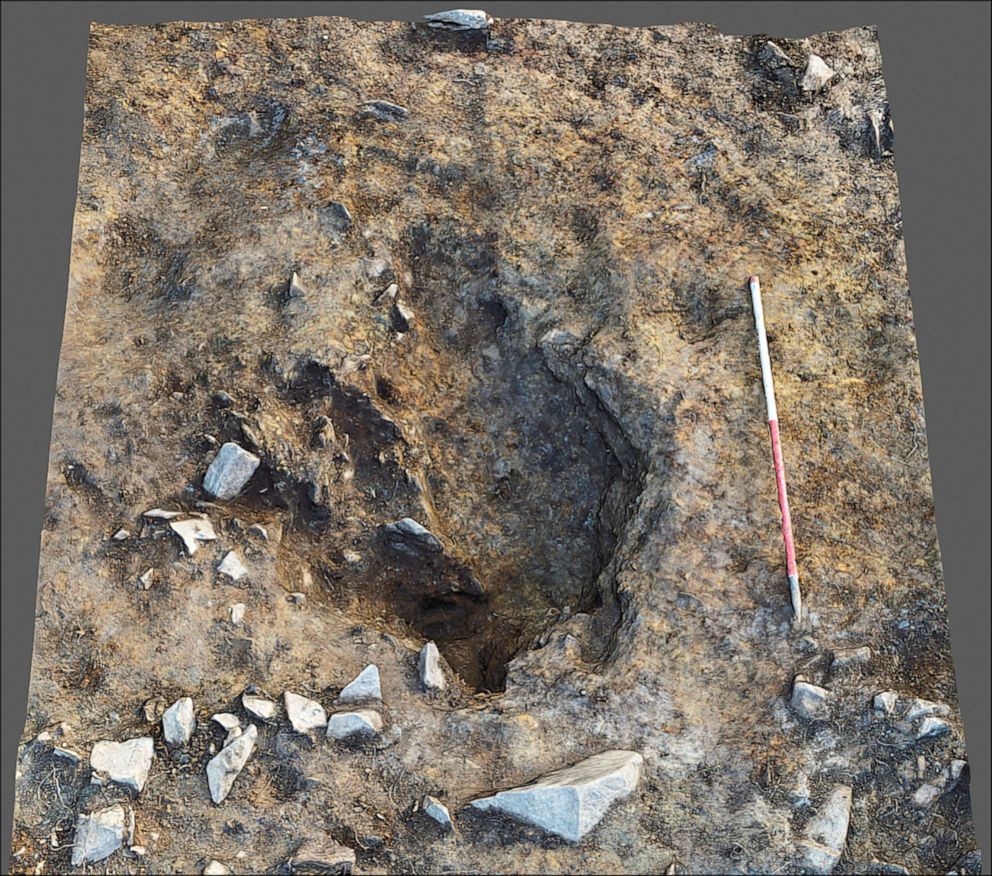Stonehenge may be a rebuilt Welsh stone circle, new research shows
Researchers are one step closer to solving the mystery of Stonehenge's origins.
LONDON -- For thousands of years, Stonehenge has stood on the downlands of what is now southern England. With its origins and purpose shrouded in mystery, the massive prehistoric monument has long captivated the imagination of mankind.
In his 12th century book "The History of the Kings of Britain," Welsh cleric Geoffrey of Monmouth wrote that Merlin, the wizard prominently featured in the legend of King Arthur, was enlisted to lead an army to Ireland and transport a ring of gigantic mystical stones, called the Giants' Dance, to what is commonly believed to be Salisbury Plain, a chalk plateau in the English county of Wiltshire where Stonehenge is located.
Although Geoffrey's book is a work of pseudo-history, a new discovery raises the possibility that there's a grain of truth in the 900-year-old tale of Stonehenge's origins.
A team of archaeologists, led by Mike Parker Pearson of University College London, has unearthed Britain’s third-largest stone circle in the Preseli Hills of western Wales that they believe was dismantled, moved 175 miles to England's Salisbury Plain and rebuilt as Stonehenge, according to research to be published Friday in Antiquity, a peer-reviewed journal of archaeology.
"It's amazing that it's only in the last year that we've really come up with answers for the origins of Stonehenge's stones," Parker Pearson told ABC News. "The sarsens coming from 15 miles to the north of Stonehenge and the bluestones -- or at least some of them -- deriving from a former stone circle in the Preseli Hills."

Stonehenge is made up of two main types of rock. The sarsens, sandstone slabs weighing 25 tons on average, form the iconic central horseshoe, the uprights and lintels of the outer circle, as well as the outlying Station Stones, Heel Stone and Slaughter Stone. A variety of 2- to 5-ton igneous rocks known as bluestones, due to their bluish tinge when wet or freshly broken, form the smaller inner horseshoe.
Scholars have known for decades that most of Stonehenge’s bluestones were carried, dragged or rolled to Salisbury Plain from the Preseli Hills. In 2019, Parker Pearson and his team provided evidence of the exact locations of two of the bluestone quarries. And last year, another team of researchers led by David Nash of the University of Brighton revealed that most of Stonehenge's sarsens hail from a woodland area in Wiltshire, some 15 miles from where they stand on Salisbury Plain.
The bluestones are thought to have been the first to be erected at Stonehenge some 5,000 years ago, centuries before the larger sarsen stones were brought there. The discovery by Parker Pearson and his team that the bluestones had been extracted from two quarries in the Preseli Hills before the first stage of Stonehenge was built in 3000 BC prompted them to reinvestigate a nearby partial stone circle called Waun Mawn, so they could determine whether those monoliths were the remains of a stone circle supplied by the quarries that was then dismantled to build Stonehenge.

Parker Pearson said they had identified the Waun Mawn site in the Preseli Hills "from the very beginning, but discounted it because of disappointing geophysical survey results."
"It was hard work over eight years with a big team and we hit many dead ends," he said. "We had to start by excavating the bluestone quarries, then doing geophysical surveys across rough terrain, excavating possible sites, finding out that none of these were what we were searching for, and finally going back to a site we had discounted."
"So, going back to it and finding out we should have stuck with it from the very beginning was certainly a surprise," he added. "But the years in between weren't wasted because we really get to know the landscape and to cross off all the other likely possibilities."

Even when they returned to Waun Mawn, more geophysical surveys -- including radar, magnetometry, earth resistance and elecromagnetic induction -- "all came up blank," forcing Parker Pearson and his team to then strip the turf on their trenches by hand without mechanical excavators.
"Being halfway up a mountain, we often had to dig in strong winds and pouring rain," he said. "But it was all the sweeter in the end."
Their archaeological excavations at Waun Mawn in 2018 uncovered six empty holes for missing monoliths, confirming that the four remaining standing stones were part of a former circle. The results of their research, which will be featured in a BBC documentary airing Friday night, also revealed significant links between Waun Mawn and Stonehenge, suggesting that at least part of the former circle was brought from the Preseli Hills to Salisbury Plain.
Parker Pearson and his team found that Waun Mawn shares an identical diameter with the enclosing ditch of Stonehenge, that both sites are aligned on the midsummer solstice sunrise and that one of Stonehenge's bluestones has an unusual cross-section that matches one of the holes left at Waun Mawn and chippings in that hole are of the same rock type as the Stonehenge rock, according to their research paper in the February 2020 issue of Antiquity.

The stones at Waun Mawn may have been moved as part of a population migration out of western Wales, as the first people to be buried at Stonehenge are likely to have once lived in that region, according to the paper. But more questions remain.
"We don't know enough about the bluestones at Stonehenge," Parker Pearson admitted. "Many are entirely buried beneath the grass and were last seen in the 1950s and 1960s when nobody bothered to properly identify the types of rock, so that's a very necessary but straight-forward job to lift some turf and take samples."
"We've not yet tracked down the sources of all of the different types of bluestone in Preseli or pinpointed the source of the Altar Stone, thought to have come from the Brecon Beacons," he continued. "And I suspect there were more stone circles in Wales that contributed their bluestones to Stonehenge. It would be great to track these down but it's not going to be easy."
Despite what legend says, none of Stonehenge's rocks came from Ireland and the evidence suggests that the stones were not transported by a Neolithic wizard and his army. But Parker Pearson and his team still posed the question in their research paper: "Is Waun Mawn the Giants’ Dance described by Geoffrey of Monmouth?"
"Archaeology and myth make awkward companions," they wrote.



